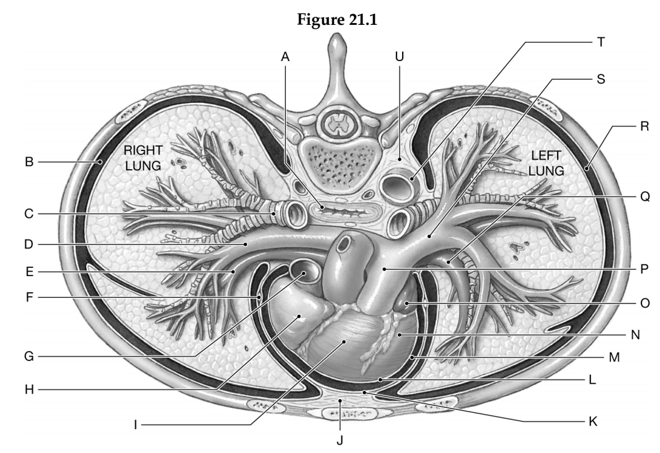Which of the following is a spinal flexor?
A) quadratus lumborum
B) longus capitis
C) longus colli
D) All of the answers are correct.
E) both the longus capitis and the longus colli
D
You might also like to view...
Using the figure below, identify the labeled part.

1. Label A: ______________________________
2. Label B: ______________________________
3. Label C: ______________________________
4. Label D: ______________________________
5. Label E: ______________________________
6. Label F: ______________________________
7. Label G: ______________________________
8. Label H: ______________________________
9. Label I: ______________________________
10. Label J: ______________________________
11. Label K: ______________________________
12. Label L: ______________________________
1.3 Label M: ______________________________
14. Label N: ______________________________
15. Label O: ______________________________
16. Label P: ______________________________
17. Label Q: ______________________________
18. Label R: ______________________________
19. Label S: ______________________________
20. Label T: ______________________________
21. Label U: ______________________________
Which is true regarding pyrogens?
A) They can reset the temperature-regulating center in the hypothalamus and raise the body temperature. B) They break down tissue by autolysis, releasing digestive enzymes that first destroy the injured cells and then attack surrounding tissues. C) They act only within one tissue. D) They are particularly sensitive to chemicals released by other body cells or by pathogens. E) They make capillaries more permeable and speed up blood flow through the area within the damaged tissue.
The collecting duct becomes more permeable to water when
A. ADH production increases. B. plasma osmolality decreases. C. ADH production decreases. D. colloid osmotic pressure increases. E. aldosterone production decreases.
The respiratory zone is the only site of gas exchange within the lungs
Indicate whether the statement is true or false